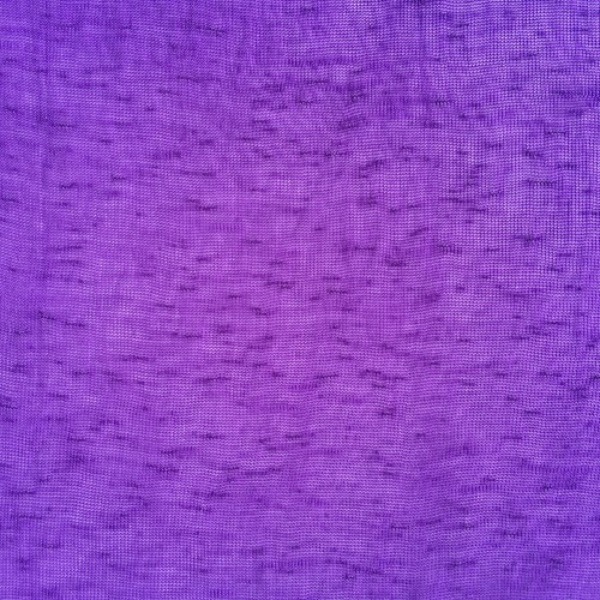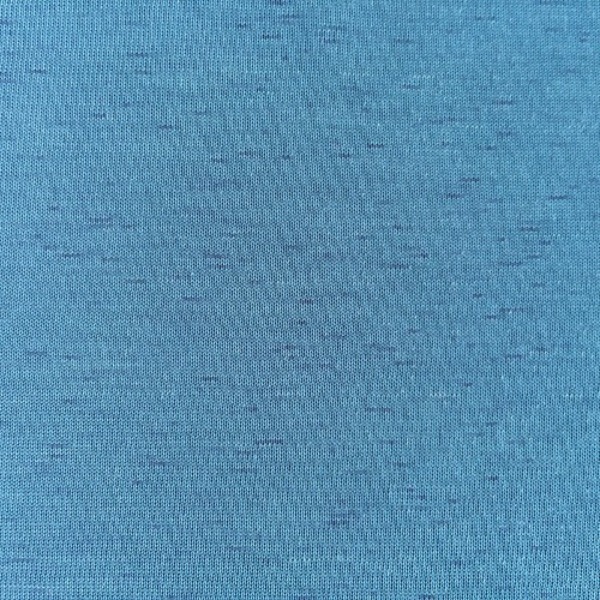
In the ever-evolving world of textiles, trends come and go, but certain materials manage to stand out for their unique blend of aesthetics and functionality. Polyester slub yarn is one such material that has been steadily gaining traction in fashion, home décor, and industrial applications. Its rise in popularity is no accident—this distinctive yarn offers a rare combination of visual interest, durability, and versatility that appeals to both designers and consumers.
From casual apparel to high-end upholstery, polyester slub yarn brings a touch of texture and character that sets it apart from smoother, more uniform fabrics. But what exactly makes this yarn so special? In this comprehensive guide, we’ll explore everything from its definition and manufacturing process to its properties, applications, and environmental impact, revealing why polyester slub yarn is becoming a staple in modern textile production.


Polyester slub yarn is a type of textured yarn defined by its intentionally irregular surface. Unlike conventional yarns, which maintain a consistent diameter throughout their length, slub yarn features alternating thick and thin sections known as “slubs.” These slubs are not defects; they are carefully crafted during the spinning process to create a distinctive, organic texture.
When woven or knitted into fabric, these variations in thickness produce a visually engaging pattern that mimics the look of handspun fibers. This gives the material a rustic, artisanal feel—think linen-like texture or the soft irregularity of handwoven textiles—while retaining the practical benefits of polyester. Polyester, a synthetic fiber derived from petroleum-based polymers, is known for its strength, wrinkle resistance, and affordability, making polyester slub yarn a functional yet stylish choice for a wide range of products.
The concept of slub yarn dates back centuries, rooted in the imperfections of handspun fibers. Before the industrial revolution, hand-spun yarns naturally contained thick and thin sections, as human hands could not achieve the uniformity of machine-spun threads. These “flaws” were once seen as drawbacks, but they also gave fabrics a unique, handcrafted charm.
As textile manufacturing became mechanized in the 19th and 20th centuries, the focus shifted to producing perfectly uniform yarns. Machines like the spinning jenny and ring spinner allowed for consistent thickness and texture, prioritizing efficiency and predictability over visual character. However, by the mid-20th century, there was a growing nostalgia for the warmth and uniqueness of handcrafted textiles. Designers and manufacturers began seeking ways to recreate the look of traditional slub yarns using modern technology.
The introduction of polyester in the 1940s provided a new canvas for this experimentation. Polyester’s durability and adaptability made it an ideal fiber for engineering controlled slubs. By the 1970s and 1980s, advances in spinning technology—including computerized drafting systems—allowed manufacturers to program slubs of varying lengths, thicknesses, and frequencies. This marked the birth of polyester slub yarn as we know it: a material that combines the rustic appeal of handspun fibers with the performance and affordability of synthetic polyester.
Polyester slub yarn’s popularity stems from its ability to bridge the gap between style and practicality. Here are the key reasons behind its rise:
As consumers increasingly value both style and functionality, polyester slub yarn has emerged as a go-to choice for meeting these demands.
Slub yarn is a general term for any yarn with intentional variations in thickness. The word “slub” originally referred to accidental lumps or thickenings in handspun yarn, but today, it describes a deliberate design element. These variations create a textured surface that adds depth and tactile interest to fabrics, distinguishing them from the smooth, uniform appearance of conventional yarns.
Slub yarns can be made from a variety of fibers, including natural fibers like cotton and linen, and synthetics like polyester and acrylic. What unites them is their irregular structure, which ranges from subtle, almost imperceptible thickenings to bold, dramatic slubs that create a pronounced pattern.
Creating slub yarn requires precise control over the spinning process to introduce intentional irregularities. Here’s a step-by-step breakdown of how it’s made:
Fiber Preparation: Raw fibers (in this case, polyester) are cleaned, carded, and drawn into a continuous strand called roving. This roving is a thick, loose bundle of fibers that serves as the base for spinning.
Specialized Spinning: The roving is fed into a spinning machine equipped with a slub attachment—a computer-controlled drafting system consisting of multiple rollers. These rollers stretch and thin the roving to form yarn, but unlike standard spinning machines, they are programmed to vary their speed.
Controlled Drafting: The key to creating slubs lies in adjusting the speed of the drafting rollers. When the rollers slow down, more fiber accumulates, forming a thick, soft slub. When they speed up, the fiber is stretched thinner, creating the spaces between slubs. This process is repeated continuously to produce a consistent pattern of thick and thin sections.
Twisting and Winding: Once the slub pattern is formed, the yarn is twisted to lock the fibers in place, adding strength and stability. It is then wound onto bobbins or cones for use in weaving or knitting.
Modern technology allows for precise programming of slub size, frequency, and spacing, giving manufacturers complete control over the final texture.
Slub yarns are categorized based on their fiber content and the characteristics of their slubs:
By Fiber Content:
By Slub Characteristics:
Polyester slub yarn inherits many of polyester’s signature properties while gaining unique characteristics from its slubbed structure. Here’s a closer look at its key attributes:
Polyester is renowned for its strength, and this translates directly to polyester slub yarn. The fibers are resistant to abrasion, tearing, and stretching, making fabrics made from this yarn long-lasting. Whether used in clothing that undergoes frequent washing or upholstery subjected to daily use, polyester slub yarn holds up well over time, maintaining its structural integrity even with heavy wear.
The most defining feature of polyester slub yarn is its texture. The slubs create a three-dimensional surface that catches light differently than the rest of the yarn, adding depth and visual interest. This texture can range from subtle (with small, closely spaced slubs) to dramatic (with large, irregular thickenings), allowing for a wide range of aesthetic effects. Fabrics made from polyester slub yarn often have a “lived-in” look, evoking the warmth of handcrafted textiles.
Polyester fibers are inherently resistant to shrinkage, and this property is retained in slub yarn form. Fabrics made from polyester slub yarn maintain their size and shape even after repeated washing and drying, eliminating the need for careful handling or pre-shrinking. Additionally, polyester’s low moisture absorption means it resists wrinkles, making garments and home textiles easy to care for—perfect for busy lifestyles or travel.
Polyester has excellent dye affinity, meaning it holds color well. Dyes penetrate deeply into the fiber’s molecular structure, resulting in vibrant, long-lasting hues that resist fading from sunlight and washing. This makes polyester slub yarn ideal for colorful garments, outdoor cushions, or curtains, where maintaining a fresh, vivid appearance is important.
While polyester is not as absorbent as natural fibers like cotton, it has unique moisture-wicking properties. The fibers draw moisture away from the skin to the fabric’s surface, where it evaporates quickly. This makes polyester slub yarn a good choice for activewear or warm-weather clothing, as it helps keep the wearer dry. Additionally, the slub texture creates tiny air pockets in the fabric, enhancing breathability compared to smooth polyester.
The production of polyester slub yarn involves combining standard polyester fiber manufacturing with specialized spinning techniques to create slubs. Here’s a detailed overview:
The primary raw material for polyester slub yarn is polyethylene terephthalate (PET), a polymer derived from petroleum. PET is typically supplied as small, solid pellets, which are melted and processed to form continuous filaments. In recent years, recycled PET (from plastic bottles) has become an increasingly common raw material, offering a more sustainable alternative to virgin petroleum-based PET.
The creation of slubs occurs during the spinning phase, which involves several key steps:
Extrusion and Drawing: PET pellets are melted and forced through a spinneret—a device with tiny holes—to form fine, continuous filaments. These filaments are then stretched (drawn) to align the polymer molecules, increasing the yarn’s strength and reducing its thickness.
Slubbing Mechanism: The drawn filaments are fed into a spinning machine (either ring spinning or open-end spinning) equipped with a slub attachment. This attachment uses computer-controlled drafting rollers to vary the yarn’s thickness.
Programmed Speed Variation: The computer adjusts the rollers’ speed to create slubs. Slowing the front rollers allows more fiber to accumulate, forming a thick slub. Speeding up the rollers thins the yarn, creating space between slubs. The operator can program the slub size, frequency, and length to achieve the desired texture.
Twisting: The yarn is twisted to bind the fibers together, adding strength and stability. The level of twist affects the yarn’s feel—more twist creates a firmer yarn, while less twist results in a softer, loftier texture.
To ensure consistency and performance, quality control measures are implemented throughout the process:
Polyester slub yarn’s unique combination of texture and performance makes it versatile across industries. Here are its most common uses:
In fashion, polyester slub yarn is prized for its ability to add visual interest to garments while remaining durable and easy to care for.
In home décor, polyester slub yarn adds texture and style to living spaces while withstanding daily use.
Beyond consumer goods, polyester slub yarn is used in specialized industrial settings:
Like any material, polyester slub yarn has its strengths and limitations. Understanding these can help in choosing the right yarn for a project.
How does polyester slub yarn stack up against other popular slub yarns? The table below compares it to common alternatives:
| Yarn Type | Aesthetic | Durability | Care | Breathability | Cost |
|---|---|---|---|---|---|
| Polyester Slub | Structured, defined slubs; rustic look | High (resists wear/tearing) | Wrinkle/shrink-resistant; machine washable | Moderate (wicking properties) | Low to Moderate |
| Cotton Slub | Soft, fuzzy slubs; natural look | Moderate (prone to stretching) | Wrinkles easily; may shrink | High (absorbent) | Moderate |
| Linen Slub | Crisp, irregular slubs; luxurious drape | High (strong but wrinkles) | Requires careful washing; wrinkles easily | Very High | High |
| Acrylic Slub | Voluminous, wool-like texture | Moderate (prone to pilling) | Easy care; wrinkle-resistant | Low | Low |
Whether sewing, weaving, or knitting with polyester slub yarn, these tips can help achieve the best results:
As consumers and manufacturers prioritize sustainability, the environmental impact of polyester slub yarn has come under scrutiny. Here’s what to know:
Choosing recycled polyester slub yarn and supporting brands with eco-friendly production practices can help minimize its environmental footprint.